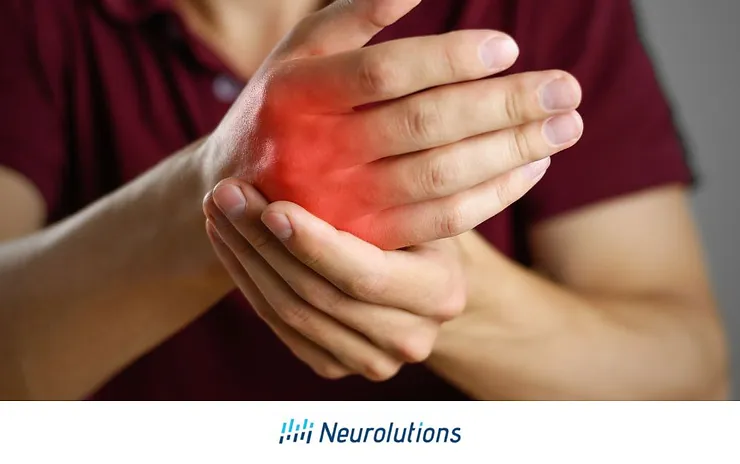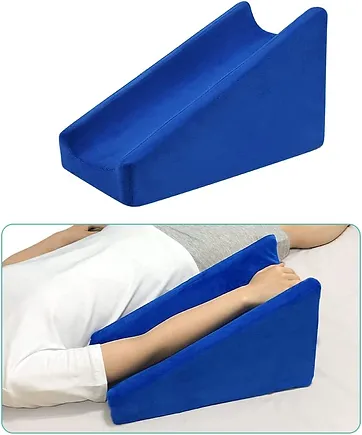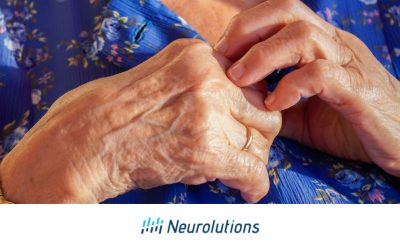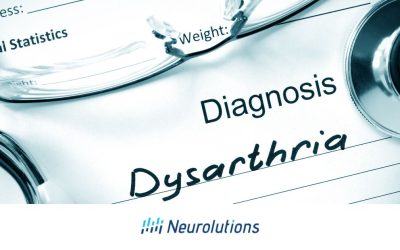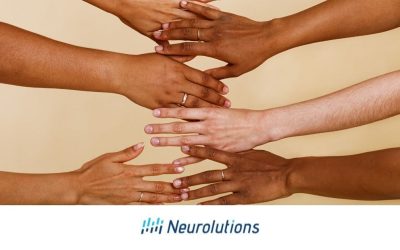Up to an estimated, between 65-88% of all individuals who experience a stroke have some level of arm impairment or dysfunction. Two common impairments following impairment of the arm after a stroke are:
- Pain
- Swelling
Pain and swelling can be increasingly bothersome over time caused by an inability to use the arm in functional activities, loss of muscle activity, and abnormal tone.
What Causes Arm Pain After A Stroke?
Following a stroke, pain can be associated with swelling, overstretching of the joint capsules, eventual shortening of the muscles after prolonged positioning or weakness, development of contractures, and overstretching of alternate muscle groups. Soft tissue injuries (e.g. trauma to muscles, tendons, ligaments) may also occur incidentally during transfers or self-care activities. Soft tissue injury most commonly occurs when the upper extremity is flaccid or severely weak. Hanging/dangling the arm may get trapped in the wheelchair armrest, accidentally pinned, or pulled on by the person helping him with mobility tasks. The glenohumeral (e.g. shoulder) and wrist joints are particularly at risk due to the increased likelihood of trauma. These joints are very unstable and tend to be easily “pulled” during functional mobility or transfers, especially for stroke survivors with low tone.
What Causes Swelling After A Stroke?
Swelling, or dependent edema, usually appears on the top or sides of the hand. Fluid gradually collects under the extensor tendons due to absent or reduced movement of the hand and upper limb. Pooling of fluid begins to block both passive and active movement, restricting the ability to fully make a fist or straighten the fingers. Pooling of fluid worsens when the hand and upper limb remain in the same position for prolonged periods of time. When the arm hangs towards the floor, gravity promotes fluid to drain down to the fingertips, the hand, from the rest of the arm.
Common Treatments For Pain In The Arm After Stroke
The following interventions may be used following stroke to help with pain relief:
Image Courtesy of Amazon – View Product
Splinting
Splinting is used when the shortening of tendons occurs due to lack of movement or spasticity, in turn causing pain. Splinting or the use of orthotics can promote functional positioning and help relieve pain by keeping the wrist or elbow in a neutral position. Not only does joint alignment help with pain management, but it also can help long-term with the prevention of edema and maintaining the normalized length of tendons.
Use Of Adaptive Equipment
Pain is a limitation. The use of adaptive equipment to lessen the burden of movement on the painful extremity can be helpful. For example, a reacher is designed to compensate for limitations related to reduced range of motion and strength as well as pain.
Positioning Programs Or Strategies
Positioning while standing, sitting in a standard chair, wheelchair, or when in bed is crucial to help prevent long-term pain following a stroke. Positioning should be focused on the promotion of normal positioning of the trunk and limbs through the lengthening of tendons, preventing shortening caused by weakness or spasticity. Pillows, splints, wedges, and many other tools can be used to promote proper positioning. If able, it is beneficial to have the stroke survivor work towards a change of positions independently for safety, comfort, and pain management throughout the day. Also, having a positioning program for the day and nighttime/sleeping can be very helpful.
Functional Range Of Motion (AROM) And Passive Range Of Motion (PROM) Of The Affected Limb.
Prolonged positioning in one place should be avoided to avoid pain as much as possible. Continuing to attempt to move the affected extremity throughout the day through the use of active movement or passive range of motion is essential. Gentle movement is also imperative to not increase pain. Optimally, the stroke survivor will be trained and independent on a home active range of motion or passive range of motion program.
Stretching Of The Affected Limb
Prolonged low-load stretching (PLLS) can be very helpful for pain relief if the pain is due to the shortening of tendons following a stroke due to the onset of spasticity or nonuse. PLLS involves the placement of tight muscles at their optimal maximal stretch, prolonging the hold to their tolerance. This technique is different compared to the passive range of motion where the stretch is only held for a short amount of time. When the stretch is not held long enough, the tension may not release nor will long-term changes be made in the length of the tissue. This technique should be applied or taught to the survivor and caregiver by a trained occupational or physical therapist. PLLS can also be facilitated by casting, splinting, or weight-bearing techniques set with a program with specified times or wear schedules.
Approximation Of Joint Mobilization
When pain and tightness persist throughout areas such as the wrist and fingers, it can interfere with techniques used to improve mobility. A trained occupational therapist or physical therapist may perform manual interventions that allow increased soft tissue movement impacted by a hard end feel at the area of the joints.
Graded Motor Imagery Or Mirror Therapy
Recently, graded motor imagery (GMI) and mirror therapy (MT) has demonstrated positive results for survivors experiencing chronic pain. These approaches aim to “retrain the brain” by normalizing or modulating central processing in the brain when experiencing complex regional pain syndrome in the upper limb. Please seek treatment for this from a trained occupational or physical therapist if interested in this treatment pathway.
Modalities Such As Heat Or Taping
The use of modalities can all be useful in the reduction of pain by interrupting muscle spasms and neurological pathways. Through the application of heat, vasodilation (i.e. opening of the venous and arterial system) occurs and results in muscle relaxation. Be sure to avoid the use of heat in stroke survivors with skin or inflammatory conditions. Taping techniques can help provide stabilization to the unstable joints which are causing pain. Please see a therapist trained in the use of modalities for pain relief.
Caregiver Training
One of the most common causes of pain to the upper extremity following a stroke is trauma during a functional transfer. Patient and caregiver education on safe transfer techniques is essential to promote the affected side of the body. Seek training from an experienced occupational therapist or physical therapist to help protect yourself and your loved ones.
Common Treatments For Swelling In The Arm After Stroke
For swelling, techniques used to lessen gravity’s pull on the weak hand aims to mobilize the fluid from pocketing in the hand. They are as follows:
Elevation Paired With Proper Positioning
Positioning the swollen hand above the heart or in a gravity-eliminated or lessened position can help relieve pooling in the hand. Pillows, arm troughs, or tables provide not only support to elevate the hand, but also provide stability to the weak arm. When not walking or using functional activity or exercise, provide support for the arm. Do not let it “hang” down to the ground. Allowing the arm to hang not only be damaging to the shoulder joint, but also it also increases swelling because it pools fluid in the hand.
Low-Grade Compression
Compression works by helping to control swelling by placing a boundary to which the swelling can reach and then sending the fluid back toward the heart. Many stroke survivors may have heard the term “Isotoner® glove.” These tend to remain popular, however, unfortunately, Isotoner® gloves may not provide the required level of medical-grade compression needed to support fluid once it has begun to fill the hand and wrist area. Another limitation to wearing only an Isotoner® glove is that they tend to promote fluid collection and movement only up to the wrist where the gloves tend to stop. Speak with your therapist or doctor about a referral to a lymphedema therapist for an assessment. A prescription is required for the proper compression garment if this is appropriate for your swelling.
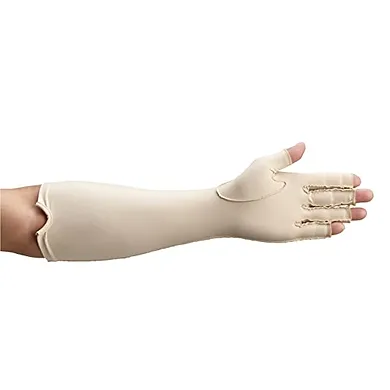
Range Of Motion And Functional Use Of The Hand
One of the best ways to combat swelling in the hand following a stroke is to actively move the hand. The “Pumping” of muscles in the arm acts like a pump to push/pull fluid away from the hand and back to the heart. Pumping methods include opening and closing the hand to make a fist as well as bending the elbow straight and back in or punching into the air. The more active movement the arm experiences, the less likely the arm will pool fluid down to the fingers due to lack of movement.
Joint Mobilization Paired With A Passive Range Of Motion
If active movement is not possible, implementation of a passive range of motion home exercise program is essential to help maintain the movement of fluid within the hand and to the rest of the arm. If fluid continually pools in the wrist and hand area, mobilization to the wrist joints can help the fluid bypass the “congested” area.
Use Of Ice Or Other Modalities Such As K-Taping
Sometimes fluid responds well to the use of ice to promote vasoconstriction or tightening of the vascular and arterial system. Also, some individuals respond well to special, one-way stretch fabric kinesiology taping. The tape can be applied in a “spider-like” pattern to prompt the opening of channels for fluid to move from a congested area to a non-congested area. Working with a therapist who is trained in these techniques can help to find what works for each survivor.
As a note, this article references swelling caused by weakness of the arm leading to what is called dependent edema in the hand, signified by “pitting” soft fluid. Pitting is a description for when the skin and tissue can be pushed down and causes brief to lasting indentation- almost like bread or a water balloon.
Techniques to reduce dependent swelling are different from techniques to manage lymphedema swelling. Over time, prolonged swelling in the same area can sometimes turn into lymphedema if not treated following a stroke, turning into non-pitting edema. Lymphedema is serious and difficult to treat without professional help. Please see a certified lymphedema therapist (CLT, or CLT-LALA) for treatment of swelling or lymphedema. To find a certified lymphedema therapist please use this tool: https://www.clt-lana.org/.
References:
Victoria W. Priganc, Susan W. Stralka,Graded Motor Imagery,Journal of Hand Therapy,
Volume 24, Issue 2, 2011,Pages 164-169,ISSN 0894-1130,https://doi.org/10.1016/j.jht.2010.11.002.
Pendleton and Schulta-Krohn (2006) Pedretti’s Occupational Therapy Practice For Physical Dysfunction: 6th Edition. New York, Elisver.

